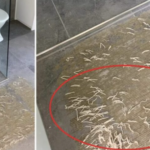The Truth Beneath the Surface: Understanding Pimples, Treatments, and the Journey to Clear Skin
For many people, the occasional pimple is a minor nuisance—a brief and frustrating interruption to otherwise healthy skin. But for others, pimples can become a chronic and distressing condition, affecting self-esteem and overall quality of life.

While social media often glamorizes the satisfying visuals of pimple popping, the truth behind skin health is more complex and deserves a closer, more compassionate look—especially for older adults who may be experiencing skin changes later in life.
In this article, we’ll explore the real science behind pimples, the various types of blemishes that can appear on the skin, and the most effective professional treatments available today. We’ll also examine the pros and cons of pimple popping,
discuss safe skincare routines, and provide guidance on when it’s time to seek medical help. Whether you’re dealing with hormonal breakouts or just curious about that oddly satisfying video, this story will offer insight, education, and a path to healthier skin.
What Are Pimples, Really?
Pimples are a type of acne lesion that forms when hair follicles (pores) become clogged with oil (sebum), dead skin cells, and sometimes bacteria.
These blockages create an environment where bacteria such as Propionibacterium acnes can thrive, leading to inflammation, swelling, and sometimes infection.
While acne is often associated with teenagers, it can affect people of all ages. In fact, adult-onset acne is increasingly common, especially among women going through hormonal changes due to menopause, stress, or underlying health issues.
Types of Pimples
Understanding the different types of pimples can help you identify the most appropriate treatment. Here are the primary categories:
Whiteheads: Closed comedones that appear as small, white bumps under the skin.
Blackheads: Open comedones that look like tiny black dots on the skin’s surface.
Papules: Small, red, raised bumps caused by inflamed or infected hair follicles.
Pustules: Similar to papules but filled with pus. These are the kind often seen in popping videos.
Nodules: Larger, painful lumps deep under the skin, often requiring medical treatment.
Cysts: Severe acne lesions filled with pus, often leading to scarring if not treated properly.
The Emotional Toll of Skin Imperfections
While pimples may be dismissed as cosmetic issues, they can have a profound impact on mental health. Studies show that individuals with moderate to severe acne often report higher levels of anxiety, depression, and social withdrawal. This is especially true for older adults who may feel embarrassed about developing acne “later in life.”
Skin conditions shouldn’t be a source of shame. Instead, they should be seen as a signal that the body is trying to communicate something—whether it’s hormonal imbalance, diet, stress, or a need for better skincare.
The Temptation to Pop
There is something oddly satisfying about watching a pimple being popped—so much so that entire social media empires have been built around this phenomenon. Dermatologist Dr. Sandra Lee, aka “Dr. Pimple Popper,” has garnered millions of followers by broadcasting these procedures in high-definition glory.
But is popping safe?
The short answer: It depends.
Popping pimples at home can lead to infection, scarring, and more breakouts if not done correctly. That being said, when performed by a licensed dermatologist using sterile tools and techniques, pimple extraction can be a safe and effective treatment for certain types of acne.
If you absolutely must pop a pimple, follow these guidelines:
Wash your hands and face thoroughly.
Use a sterilized needle or comedone extractor.
Do not squeeze aggressively or dig into the skin.
Apply an antiseptic or benzoyl peroxide afterward.
Still, the safest route is to leave extractions to the professionals.
Professional Treatments That Work
There is no one-size-fits-all treatment for pimples, but modern dermatology offers a wide range of solutions that can be tailored to individual needs.
Topical Treatments:
Benzoyl peroxide
Salicylic acid
Retinoids (e.g., tretinoin)
Antibiotic creams (e.g., clindamycin)
Oral Medications:
Antibiotics (e.g., doxycycline)
Hormonal treatments (e.g., birth control pills, spironolactone)
Isotretinoin (commonly known as Accutane)
Procedural Treatments:
Chemical peels
Light and laser therapy
Drainage and extraction
Cortisone injections
Each treatment comes with its own set of benefits and potential side effects, so consultation with a dermatologist is essential for determining the right path.
Natural and Home Remedies
Some individuals prefer more holistic approaches to skincare, and while results can vary, certain natural remedies may help reduce inflammation and promote healing:
Tea tree oil: Known for its antibacterial properties.
Aloe vera: Soothes irritation and hydrates the skin.
Green tea extract: May reduce sebum production.
Zinc supplements: Shown in some studies to reduce acne severity.
Always conduct a patch test before using new substances, and consult a healthcare provider if you have sensitive skin or existing conditions.
Skin Care Tips for Older Adults
As we age, our skin becomes thinner, less elastic, and more prone to dryness. Acne in older adults often appears differently than in teens and may be more persistent. Here are tips specifically for mature skin:
Use gentle, non-comedogenic cleansers.
Avoid over-washing, which can strip natural oils.
Moisturize daily with a product suitable for your skin type.
Use sunscreen daily to prevent damage and dark spots.
Avoid heavy or greasy makeup.
Stay hydrated and eat a balanced diet.
When to See a Dermatologist
If your pimples are painful, persistent, or causing emotional distress, it’s time to seek professional help. A board-certified dermatologist can provide personalized treatment and rule out underlying health issues like rosacea, hormonal imbalances, or infections.
Telemedicine has made dermatology more accessible than ever, allowing you to consult with professionals from the comfort of your home.
Final Thoughts
Pimples may seem like a small issue on the surface, but they often reflect deeper changes within our bodies and minds. Whether you enjoy watching pimple popping videos or are simply seeking relief from recurring breakouts, the path to healthy skin begins with education, empathy, and expert care.
Taking care of your skin is not a vanity project—it’s an act of self-care and self-respect. And remember: clear skin isn’t the goal. Healthy skin is.
So the next time you come across a video of a dramatic pimple pop, take a moment to appreciate the complexity of what’s happening under the surface—and let it serve as a reminder to treat your own skin with patience, care, and the attention it deserves.


